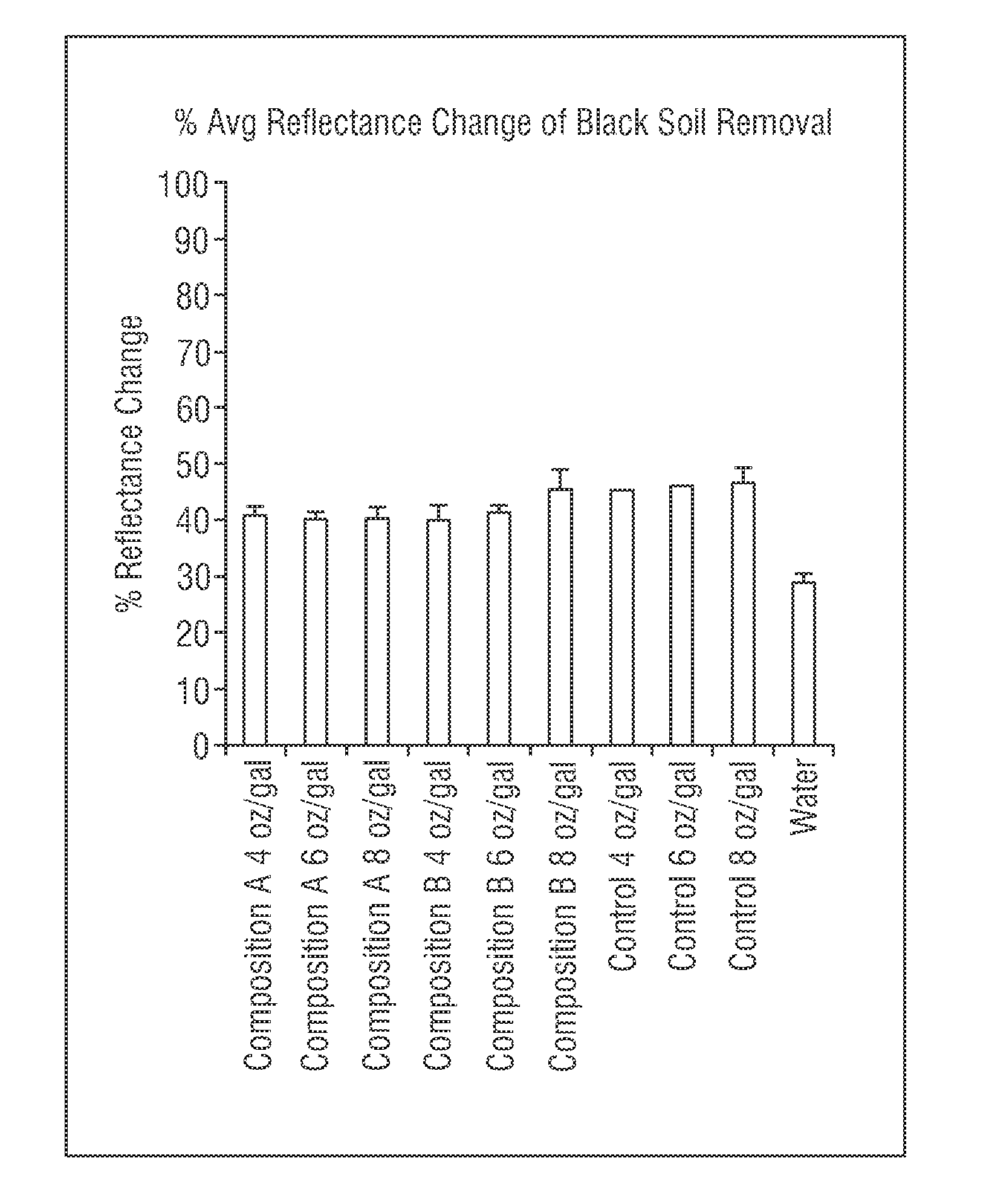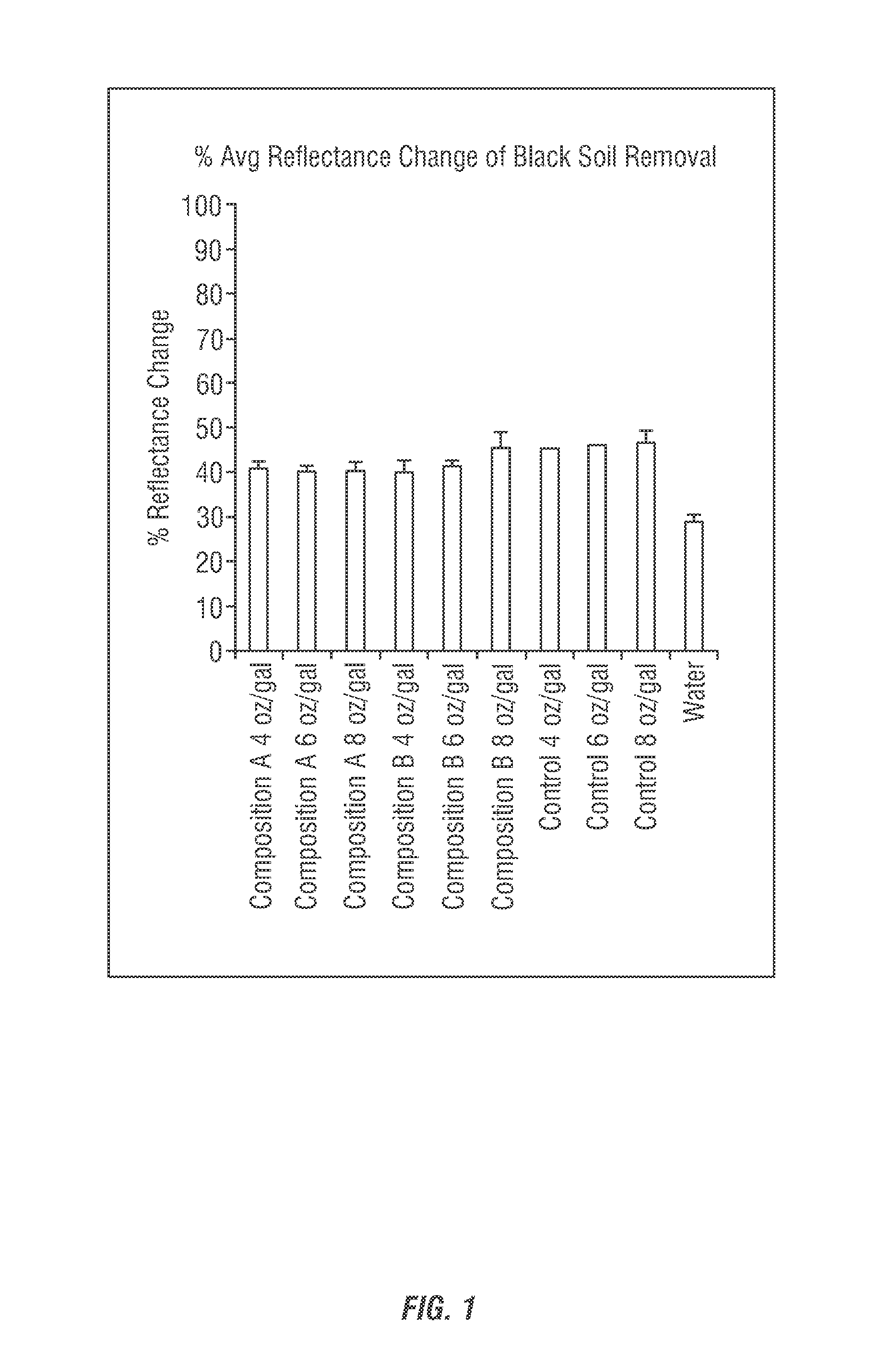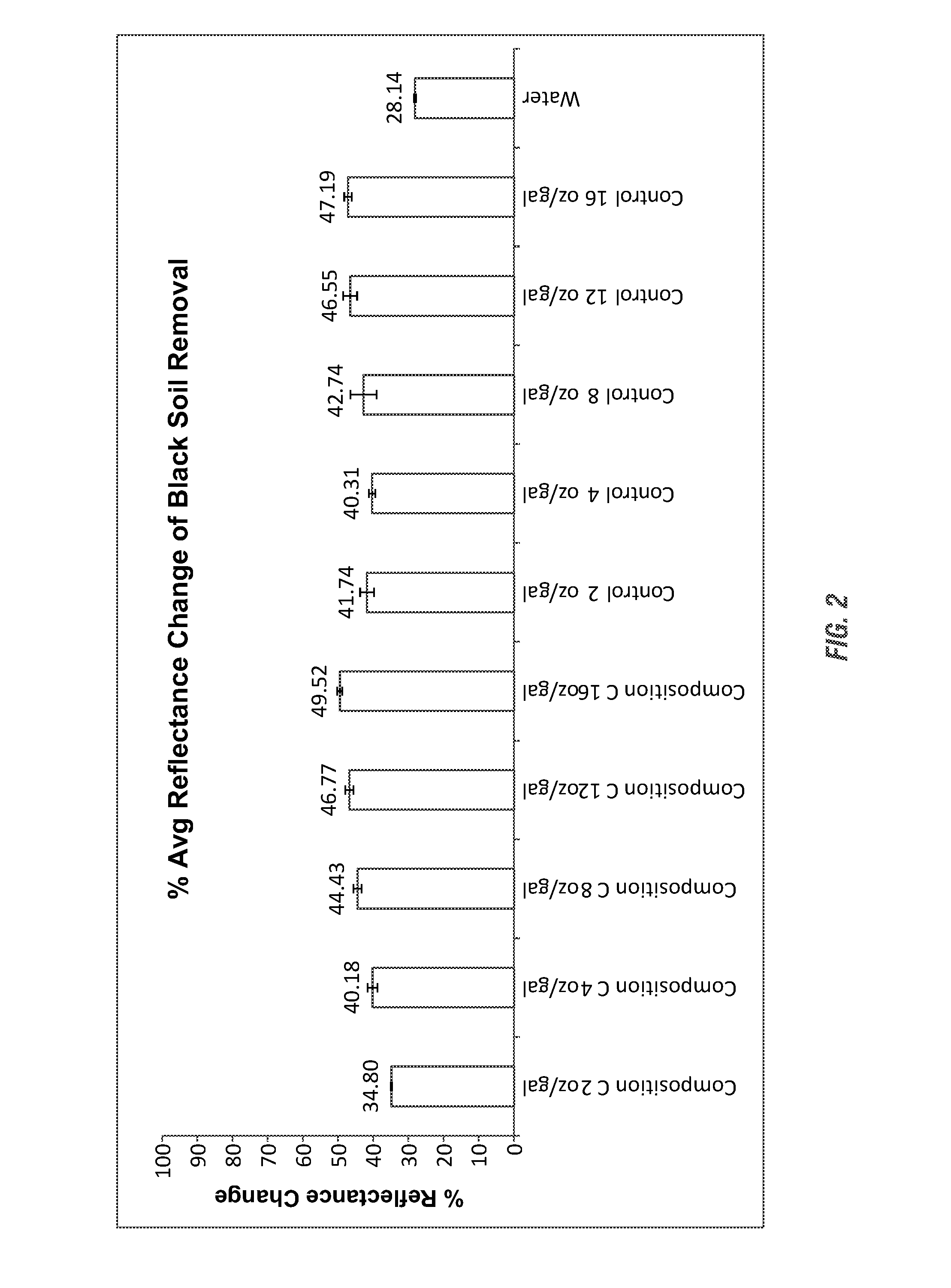All-purpose cleaners with natural, non-volatile solvent
a solvent and all-purpose technology, applied in the field of new renewable cleaning compositions, can solve the problems of poor degreasing performance of soy methyl esters, unpleasant and potent odors, and many low-voc solvent systems that provide insufficient or inferior cleaning performance, and achieve low-voc cleaning, similar cleaning efficacy or superior efficacy
- Summary
- Abstract
- Description
- Claims
- Application Information
AI Technical Summary
Benefits of technology
Problems solved by technology
Method used
Image
Examples
example 1
[0119]Methods for evaluating the performance of all-purpose cleaners and floor cleaners were performed using the following materials:
[0120]Control: Oasis Pro® 16 all-purpose cleaner available from Ecolab Inc., Saint Paul, Minn. The control is not considered a “green” alternative.
[0121]Compositions A and B: ethyl laurate non-volatile solvent all-purpose cleaners (27% actives) according to embodiments the invention. Two ethyl laurate solvent systems according to embodiments of the invention were formulated according to Table 2.
[0122]
TABLE 2IngredientComposition AComposition BWater14.9951.4Glutamic acid diacetic acid010MgCl2 (30%)4.330Sodium lauryl sulfate (30%)57.780Alkyl polyglycosides12.917.5Undeceth-5011.1Citric Acid (50%)22d-Limonene1.61.6Ethyl laurate (ethyl6.46.4dodecanoate)Total100100
[0123]Black Soil Removal Test. A black soil including about 50 grams mineral spirits, about 5 grams mineral oil, about 5 grams motor oil, about 2.5 grams black pigment dispersion and about 37.5 gra...
example 2
[0128]Additional testing of the performance of all-purpose cleaners and floor cleaners was performed using an alternative Control than the control employed in Example 1. An additional formulation of the ethyl laurate non-volatile all-purpose cleaner of the invention was evaluated using the black soil removal methods described in Example 1. The methods for evaluating the performance of various dilutions and concentrations of the all-purpose cleaners and floor cleaners according to the invention were performed using the following materials:
[0129]Control: QC® 51 all-purpose cleaner available from Ecolab Inc., Saint Paul, Minn. The control is a conventional cleaning product.
[0130]Composition C: ethyl laurate non-volatile solvent all-purpose cleaners (22.6% actives) according to embodiments the invention as shown in Table 3.
[0131]
TABLE 3IngredientComposition CWater69.4Glutamic acid diacetic acid0Sodium citrate4Sodium lauryl sulfate (30%)0Alkyl polyglycoside14Undeceth-5 (Tomadol 1-5)6.5Ci...
example 3
[0135]Additional testing of the performance of all-purpose cleaners and floor cleaners were performed using a “green” control and addition formulations of the ethyl laurate all-purpose cleaners of the invention. The methods described in Example 1 were again utilized for evaluating the performance of all-purpose cleaners and floor cleaners using the following materials:
[0136]Control: Oasis Pro® 16 all-purpose cleaner available from Ecolab Inc., Saint Paul, Minn. The control is not considered a “green” alternative.
[0137]Control (“Green”): Bio-based B.2 and B.3 experimental formulations with greater than 55 wt-% bio-based carbon.
[0138]Composition D: ethyl laurate non-volatile solvent all-purpose cleaners according to embodiments the invention as shown in Table 4 (26% actives).
[0139]
TABLE 4IngredientComposition DWater66.75Sodium citrate4.0Alkyl polyglycoside9.5C12-15 pareth 7 (Tomadol 25-7)4.0Undeceth-5 (Tomadol 1-5)4.5Citric Acid (50%)0.25Ethyl laurate (ethyl dodecanoate)8Tripropylene ...
PUM
| Property | Measurement | Unit |
|---|---|---|
| vapor pressure | aaaaa | aaaaa |
| temperatures | aaaaa | aaaaa |
| temperatures | aaaaa | aaaaa |
Abstract
Description
Claims
Application Information
 Login to View More
Login to View More - R&D
- Intellectual Property
- Life Sciences
- Materials
- Tech Scout
- Unparalleled Data Quality
- Higher Quality Content
- 60% Fewer Hallucinations
Browse by: Latest US Patents, China's latest patents, Technical Efficacy Thesaurus, Application Domain, Technology Topic, Popular Technical Reports.
© 2025 PatSnap. All rights reserved.Legal|Privacy policy|Modern Slavery Act Transparency Statement|Sitemap|About US| Contact US: help@patsnap.com



